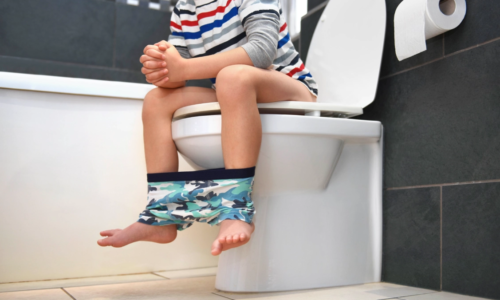Diarrhea in Children: What It Is and How to Approach It. Dr. Narmin Azizova

Diarrhea in Children: What It Is and How to Approach It
Dr. Narmin Azizova
Diarrhea in children refers to the passing of stool more frequently than usual, with a consistency that is more watery or loose, typically occurring more than three times in one day.
Normal Stool Frequency in Children
The frequency and consistency of stool vary according to the child’s age. For infants, it is normal to pass soft stools 3-10 times per day. In the first three months, some babies may pass stool twice a day or even once a week. Both scenarios can be considered normal. The color and consistency of stools can change with age, and breastfed infants may have stools that are yellow, green, or brown in color.
Risk Factors for Diarrhea in Children:
-
Lack of breastfeeding
-
Frequent contamination of bottles and pacifiers
-
Improper preparation or storage of food
-
Use of unclean water
-
Personal risk factors such as chronic diseases or a weakened immune system
Common Causes of Diarrhea in Children:
-
Intestinal infections caused by viruses, bacteria, parasites, etc.
-
Food poisoning
-
Teething
-
Sensitivity or allergies to certain foods
-
Excessive consumption of fruits or fruit juices (especially apples, grapes, figs, etc.)
-
Use of antibiotics
-
Lactose intolerance
-
Upper or lower respiratory tract infections
-
Metabolic disorders
-
Problems with digesting fructose (found in fruits and honey)
-
Rare conditions like Crohn’s disease, Ulcerative Colitis, Celiac Disease, and Irritable Bowel Syndrome may also cause chronic diarrhea
Symptoms of Diarrhea in Children:
-
Soft and watery stools
-
Increased frequency of stool passage
-
Increased stool volume
-
Mucus or blood in the stool
-
Fever
-
Vomiting
-
Abdominal pain
-
Irritability
Diarrhea can occur in any season, but it is more common in summer due to the rapid spoilage of food, potential lapses in hygiene, changes in eating habits, and increased consumption of seasonal fruits.
How Diarrhea Spreads:
Infections are primarily transmitted through hand-to-mouth contact with contaminated feces. Additionally, food that is improperly stored or undercooked, as well as unclean water, can harbor bacteria that lead to diarrhea.
Duration of Diarrhea:
The duration of diarrhea can vary, typically lasting from a few hours to several days.
When Should You Consult a Doctor?
-
Infants under one year of age who refuse to eat or drink for several hours
-
Frequent and large-volume watery stools
-
Signs of dehydration (dry mouth, lack of tears, sunken eyes, dry skin, reduced saliva, rapid pulse)
-
Persistent vomiting
-
Severe abdominal pain
-
Lethargy, excessive sleepiness, lack of response, or behavior changes
-
Presence of blood in the stool
-
High fever (above 39°C)
-
Noticeable decrease in urine output or absence of urination for more than 6 hours
-
Diarrhea lasting longer than 10 days
Treatment for Diarrhea:
Though the causes of diarrhea vary, the treatment approach is generally the same for sudden-onset diarrhea. Antibiotics or other medications should not be given without a doctor’s recommendation. Extra caution is necessary if vomiting accompanies diarrhea, as dehydration in children can manifest quickly and severely. Infants under one year, especially those who cannot drink enough fluids, are more prone to dehydration. Diarrhea generally lasts 3-7 days, but if it lasts longer than 10 days, it may be due to infections, digestive disorders, genetic diseases, or food allergies, and medical consultation is necessary.
Rehydration is critical. Oral rehydration solutions are commonly used, as they help restore lost fluids and electrolytes. Antibiotics are not effective against viral diarrhea, so it is essential to avoid unnecessary medications until the cause is identified. Probiotics can help manage diarrhea, but they do not shorten its duration.
How to Feed a Child with Diarrhea:
-
Breastfed babies should be nursed more frequently, continuing breastfeeding as usual.
-
Formula-fed infants should receive their usual formula more frequently.
-
Children over six months who are on solid foods can be given clear broths and soft foods like yogurt, well-cooked meat or fish, mashed potatoes, rice porridge, and high-calorie, protein-rich foods.
-
Fresh fruit juices (except apple or grape juice) and bananas (rich in potassium) are also recommended.
-
Children should be fed every 3-4 hours with small, frequent meals to avoid overwhelming the stomach.
-
Continue feeding the child even after diarrhea subsides.
Fluid Intake:
It is crucial to be vigilant with fluid intake during diarrhea, as neglecting hydration can lead to severe dehydration, shock, and even death. After each watery stool:
-
For children under two years: 50-100 ml of fluid (½ to 1 tea cup)
-
For children over two years: 100-200 ml of fluid (½ to 1 glass)
-
Older children should be given as much fluid as they can tolerate.
If vomiting is also present, fluids should be given in small sips every 5 minutes to prevent further vomiting. Simple clean water can help meet the fluid requirement, but it does not restore the electrolytes lost during diarrhea. Fluids enriched with electrolytes, such as potassium-rich fruit juices (except apple and grape), broths, or soups, should be given.
How to Prevent Diarrhea:
-
Wash hands thoroughly and frequently, especially after using the toilet or changing diapers, sneezing, coughing, or wiping a child’s nose.
-
Use hand sanitizer if washing hands is not possible.
-
Do not use unclean water.
-
Ensure raw food is properly washed before consumption.
-
Vaccinate against rotavirus, which is a major cause of viral diarrhea in children.
-
Keep children with diarrhea away from school and other children to prevent spreading the infection.
In conclusion, diarrhea in children is primarily caused by viral, bacterial, or parasitic infections and can lead to dehydration. The main treatment involves oral rehydration and monitoring for signs of dehydration. Preventative measures include good hygiene practices, safe food and water handling, and rotavirus vaccination. If symptoms persist or worsen, seek medical attention promptly.
According to the World Health Organization, diarrhea is one of the leading causes of death in children under five, causing approximately half a million deaths globally each year. In developing countries, about 50% of children with diarrhea experience severe dehydration, which can lead to shock, organ failure, and death if not treated urgently. Before the introduction of the rotavirus vaccine, nearly 40% of all diarrhea-related deaths in children under five were caused by rotavirus.
Reliable sources:
The Lancet
New England Journal of Medicine
Narmin Azizova, the founder of Pediatriya.az
